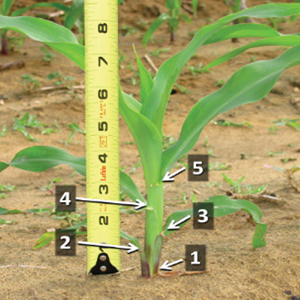4R Nutrient Stewardship Certification: 5 Groups That Play A Key Role In Its Success
Like many in the agribusiness community, I have a vested interest in the success of the 4R Nutrient Stewardship Certification Program. After all, any initiative aimed at the long-term improvement of water quality in Lake Erie — Ohio’s biggest natural resource, which sits less than two miles from CropLife Magazine’s home office — has my full support.
Perhaps one of the best things about the program is that it’s voluntary. Ag retailers want to be part of the solution to the Western Lake Erie Basin algae problem, not part of the problem itself. They want to be proactive. And certification provides a consistent, recognized standard for retailers in Indiana, Michigan and Ohio — where surrounding waters drain into Lake Erie — to follow. If voluntary efforts show positive results, then there’s a good chance it could reduce the push toward regulating the industry.
Another great thing about the program is that retailers are not alone in making it work. There are many groups that are contributing to its success. Here’s a look at five groups that are playing a critical role in 4R Nutrient Stewardship Certification:
- Ag Retailers/Nutrient Service Providers. Ag retailers, or Nutrient Service Providers (NSPs), are the main focus of 4R Nutrient Stewardship Certification. They are the ones that sell, apply or make recommendations on how fertilizers should be applied to crops and are doing so in accordance with 4R Nutrient Stewardship principles — using the right source of nutrients at the right rate and right time in the right place. According to the program, applicants must go through an audit and demonstrate they not only understand 4R principles, but also follow them. NSPs that offer advice and expertise to keep the fertilizer in the crops and out of the water, will gain customer loyalty and market share, and may also be able to charge some for the quality of their advice. Currently, more than 1.1 million acres and 3,040 farm clients are serviced by those who have received 4R Nutrient Stewardship Certification.
- Nutrient Stewardship Council/Ohio AgriBusiness Association. The 4R Nutrient Stewardship Certification Program is governed and guided by the Nutrient Stewardship Council and administered by the Ohio AgriBusiness Association. The Council is a diverse set of stakeholders from business, government, university and non-governmental sectors with a common goal of maintaining agricultural productivity, while also improving the quality of Lake Erie and its contributing watersheds. Thanks to a $1.25 million research grant awarded by the 4R Research Fund, the Council will be able to demonstrate the impacts of 4R practices. “The research covers everything from the costs to become certified as well as the water quality impacts from the fields to the watersheds to the lake level,” said Carrie Vollmer-Sanders, of The Nature Conservancy, who also serves on the Council. “We’ll be looking at what changes are made because of 4R practices and certification, and we’ll be gaining a broader perspective of the public’s perception of the program.”
- Farmers. While retailers are the ones being certified, their grower-customers — and their farms — are the ones where the best practices to retain those valuable nutrients take place. “There might be 100 farmers with one crop adviser,” Vollmer-Sanders said. “If we work with that one crop adviser so they are making the best recommendations, we have reached 100 farmers. It gets more nutrition management on the ground (and) we implement the 4R’s a lot faster.” Now more than ever, farmers are realizing that good nutrient stewardship will increase farm profitability while improving water quality.
- Nutrient Producers/Suppliers. Many fertilizer companies are demonstrating their commitment to the principles of responsible nutrient management through financial support and education, as well as through new, innovative products that are effective, but still minimize environmental impact. One example is Agro-Culture Liquid Fertilizers, which has implemented a new Retail Partner 4R Certification Reimbursement Program designed to aid AgroLiquid Retail Partners in the Western Lake Erie Basin in becoming certified in nutrient stewardship. Other fertilizer suppliers that support 4R Nutrient Stewardship include The Mosaic Co., Nachurs Alpine Solutions and Agrium.
- Ag Media. During the extensive media coverage of the Toledo water crisis last August, many Ohio citizens blamed the agricultural sector as the root of the problem due to agricultural runoff from farms in the region. While the mainstream media focused mostly on the problem, media within agriculture covered many of the solutions that were taking place to fix the problem — including 4R Nutrient Stewardship Certification. It is incumbent upon magazines like CropLife to continue to shine the spotlight on those retailers that are embracing the 4Rs and becoming certified, as well as on the other key groups that are helping to make that happen.






